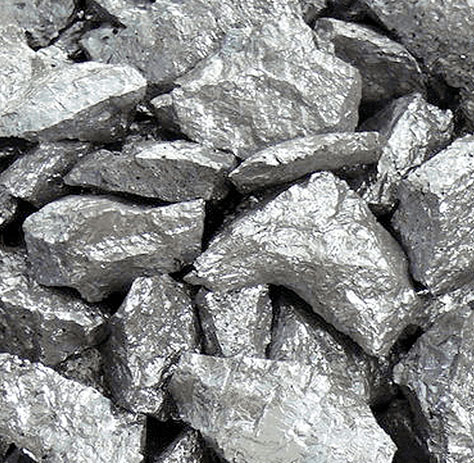
Ferrosilicon is a high-purity alloy used in the production of low alloy steel. It is produced through the alumino-thermic reduction process. Its advantages include its ability to produce low alloy steel and high strength. In addition, it is resistant to stress corrosion.
Fe-Ni is a ferro-alloy made of nickel and iron, and is a common alloy used to improve the physical properties of steel. Typically, it contains 20% to 38% nickel and the rest iron. It can also contain trace amounts of other elements. It is most commonly used in the production of low alloy steel and stainless steel. It is also present in a small amount in ferritic stainless steel.
It is produced using the basic oxygen steelmaking method, which was first commercialized in the early 1950s in Linz, Austria. The addition of boron to steel results in a stronger product after heat treatment, and also offers workability for fabricators. It is generally added to low alloy and medium carbon steels, but it is also used in high alloy steels.

Ferrosilicon is an alloy composed of iron and silicon with a variable silicon content ranging from 10% to 90%. It is commonly used in steel production as a master alloy. It is added to steel in small amounts to adjust its properties. It helps reduce metal oxides while preventing loss of carbon, making it an ideal candidate for use in steel. Ferrosilicon is also used in electrode coatings, hydrogen production, and magnesium production.
Ferrosilicon is produced in electric arc furnaces or blast furnaces through reduction of quartz sand with iron and coke. The solidified ferrosilicon is then crushed by machinery to make different-sized grades. Microtrac's CAMSIZER series analyzer is an excellent choice for ferrosilicon particle size distribution analysis. The resulting data are used in industrial quality control and research applications.
Ferrosilicon alloy is an alloy of iron and silicon, usually with a silica content of 10% to 90%. It is commonly used in the production of steel. The addition of silicon enhances the properties of the steel and helps to prevent the oxidation process. This material is also used for electrode coatings, electric steel, and hydrogen production.
The production of ferrosilicon alloy has decreased over the last few years. While China's production of the alloy peaked in 2013, global production has decreased to about 2 Mt in 2018. The ferrosilicon alloy industry is a large and globally dispersed industry, with a focus on high-volume products.
The production of ferrosilicon is a relatively straightforward process. It begins with iron, which is the main element in the process. The iron reduces the activity of the main element, making it easier to alloy. This process can be used to reduce the amount of silicon in low alloy steel by adding ferrosilicon. This process produces an alloy with 75 to 90 percent silicon.
The production process is performed in a blast furnace or an electric arc furnace. Quartz sand is combined with iron and coke and reduced to form ferrosilicon, which solidifies as a flat sheet. It is then crushed in a crusher and sifted into different size grades. For the analysis of ferrosilicon particles, the Microtrac CAMSIZER P4 dynamic image analyzer is an ideal solution. It has a dual-camera technology that provides accurate measurements of ferrosilicon particle size.
Ferro Niobium is an alloy of iron and niobium that contains between sixty and seventy percent of niobium. This alloy is used to increase the yield strength of steel and reduce the tendency to crack. It can also improve the corrosion and oxidation resistance of steel. It is a popular alloying agent for low alloy steel and is also used in ship hulls and oil and gas pipelines.
The inclusions in FeSi steel are typically in the form of MnO-SiO2-MgO clusters. These inclusions can dissolve in the steel and allow titanium to precipitate as TiOx, or they can remain insoluble and act as a core for oxide inclusions. However, there is no clear evidence that TiC inclusions are common in low alloy steel, and further studies are needed to clarify this issue.

Write a Message